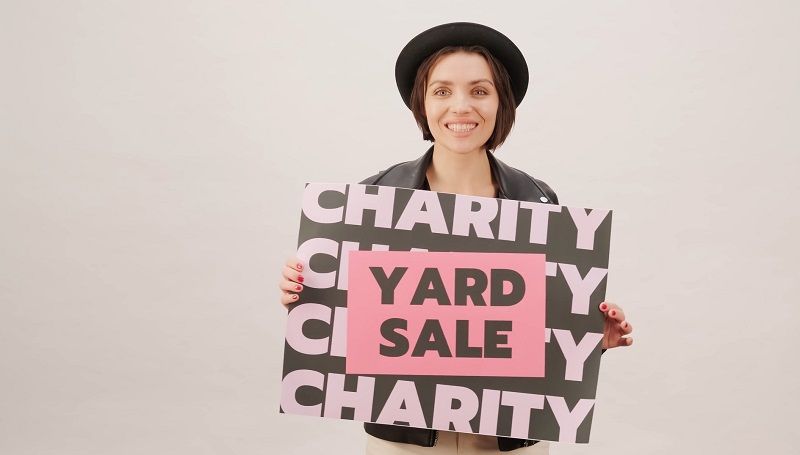Tips on How to Deal with Overstock Inventory
Carrying overstock inventory is a necessity for businesses operating in the retail industry whether they are eCommerce or brick-and-mortar. Regardless of how carefully you plan your wholesale purchases based on historical data, you might end up with excess inventory. Unfortunately, this can be a serious issue for businesses of any size. In our previous article about wholesale sourcing mistakes and tips, we have already written about the dangers of overstock inventory. If you want to do your best and try avoiding ending up with overstock inventory, head over to that article. But if you already have some overstock that you need to get rid of, do not worry. It happens with all stores, therefore, we created a guide for you on how to deal with overstock inventory. You will also learn how to minimize your losses and sell your stock at a price point where you still make money. This way you will ultimately be able to improve your bottom line.
:format(webp)/https%3A%2F%2Fbrandsgateway.com%2Fapp%2Fuploads%2F2024%2F06%2Fbanner.jpg)
Looking for a reliable dropshipping or wholesale supplier?
Join us today for top-quality products and unbeatable prices.
Why do you need to deal with your overstock inventory?
First of all, excess inventory can take up precious space in your warehouse. This will reduce the space available for your new season’s stock or force you to pay extra for additional space. Secondly, storing the overstock inventory can cost you money, and also there’s the fact that your money is stuck in it. This can result in cash flow issues and less available funds to purchase new stock. Which can ultimately lead to issues in product management and preparation for the upcoming season.
How to deal with your overstock inventory?
There are plenty of ways in which you can deal with your overstock inventory and prevent overcrowding your storage space. Read through the below tactics and tips to do so and decide which one would be best suited for your business. Also, keep in mind that you can not only use one of these at a time but can combine multiple strategies for better results.
Sell online
If you operate a brick-and-mortar store, taking your unsold merchandise online can be a great opportunity to get rid of overstock inventory. Even if there is no interest in your excess products on the local market, with an online store you can target a much wider audience. You can easily set up your Shopify store or, you can simply use intermediary platforms such as Amazon or eBay. If you are hugely overstocked with one or more items we recommend trying on eBay as there you can not only set a fixed price for your product but you can also allow customers to bid. You can put an item up for auction for a starting price as low as $0.01. This will not only guarantee that you are surely selling your merchandise but you can also create some buzz for your business. This way you might even drive shoppers to your actual store. This method will not grant you great revenue but you can be sure that you will at least make some money on your overstocked inventory. At the end of the day, you will also cut down on the cost of storage, hence improving your bottom line.
If you already operate an online store or you are selling exclusively on eCommerce, you can still make money by continuing to do so with your leftover stock. In this case, make sure that you offer competitive sales. If the product is still moving slowly, try to offer at least a 60% discount on it. This will definitely raise awareness among your visitors. Also, people are more likely to make a purchase when it does not require a big investment. Moreover, you might attract new customers to your store that can turn into returning ones. Or just get them through your door by having discounted products on offer and they can easily end up purchasing not only them but a couple of others too.
Prepare promotions and sales
Running a sale is essential when you are selling seasonal items. Organize a sale and market it well for overstock inventory that you really need to get rid of. You can increase your chances with a clearance or a flash sale at the end of the season as putting time constraints on your offer will put pressure on the consumers. When they see that an offer is for a limited time only and goods are on sale with significant discounts they are more likely to purchase.
Alternatively, if there are certain products that just will not sell, you can include them in a promotion. Whether you have an eCommerce or a brick-and-mortar store, promotions can work well for increasing customers’ awareness and footfall. Promotions can also be great incentives for customers to purchase more items or make a greater value purchase. You can offer that non-selling item as a free gift if a customer purchases over a certain amount from your shop. This will oftentimes encourage your customers to spend more to meet that mark and be eligible for the promotional gift. Ultimately, you can not only get rid of your overstock inventory but you will also end up selling more inventory as well.
Offer bulk discounts
Selling in bulk has numerous advantages apart from getting rid of your overstock inventory. Bulk purchases by a single customer can cut some expenses around packing and shipping as you are sending one package only to one address. If you are severely overstocked with a certain product or category, try offering them close to your wholesale price so you will not have any loss when it comes to your purchase price. If you can not or do not want to do this, you can still make an appealing bulk discount offer.

You can try to make your bulk offers even more attractive by having a gradual discount depending on the number of products a customer buys at the same time. For example, you can offer 20% off if a customer buys two or more from a certain product and you can even give a bigger discount after the 5th or 10th item. These types of bulk discounts can drive sales and can help you get rid of your overstocked inventory in a timely manner.
Offer product bundles
If you are stuck with a certain product, offering it in a bundle with something that is flying off the shelves can help you clear your overstock inventory faster. Try to create bundle offers of complementary products of the same brands to make them appealing to your customers. Or you can group products by seasonality as well. If you are operating an eCommerce store, make sure you offer the bundle option when the customer has already started the check-out process.
This way you will not overwhelm your customers when they are still not sure about their purchase. Moreover, it will be hard for them to say no to an offer that will only require them to add a small amount to their cart. In the case of a brick-and-mortar store, you can offer the complementary product for the bundle nearby the till. This will have the same effect on your customers when they are already heading to make the purchase.
Liquidate the excess stock
If you are unable to sell your overstock inventory to your customers even as a part of an offer or at discounted prices you can still decide on liquidating it. A liquidator can be any interested buyer who is willing to take your off-season stock from you in bulk at a discounted price and then sell it on their own channels. This can not only help you to get rid of a large amount of inventory quickly but can also give you a much-desired cash flow boost before you start a new season. You should certainly consider this option before you write off any overstock inventory as a loss. But it is always important to know the value of your stock and determine the lowest price you are comfortable selling it at. Once you have established this price, start negotiating with the liquidator. Always try to offer a higher price first so there is room for negotiation without selling your unwanted stock at a price point too low. Also, this type of selling can result in good connections in the long run so you will always have someone to rely on when ending up with too much stock you are unable to sell.
But be careful with this method when you are selling branded products especially when they are designer. When working with a liquidator you will not have an effect on the price point they are selling the goods they overtook from you to the end customer. This can seriously harm your business and the brand as well because when it comes to designer items, you are not only selling a product but representing a brand image as well. If someone can find a new and unused product from a luxury brand online at a significantly lower price it can damage your pricing power and the perceived value of your products in the future.
Join recycling programs
Textile recovery companies can take over your overstock inventory if the merchandise is made of polyester, cotton, and polycotton textiles or a mix of these. They have methods to recycle these items that did not have an end market. Due to the emerging sustainability trends, customers are more conscious than ever before about what is happening with unsold overstock inventory. Hence this could be a desirable way to manage your waste that will also be appealing to your customers. This way your company will reduce its environmental impact and send less waste to the landfills.

Moreover, by recycling, you can eliminate the cost of handling these items as waste, although some of the recycling or recovery companies might require you to pay certain costs associated with handling. If you decide upon getting your unsold merchandise recycled, do not shy away from sharing this with your customers in blog posts on your website or on your social media channels. You will surely see their positive reaction to your initiative and be able to not only protect but also improve your brand’s reputation.
Donate what is left
If your business is successful and you don’t want to make extra money from selling your overstock inventory, you can always turn to donating. Knowing that your business helped someone in need will make you feel proud. However, even if supplying your store with wholesale products costs you a great deal and you don’t want to give your overstock inventory for free, you can still benefit financially from donating to charity.
Many governments offer tax reductions if your products end up at a nonprofit charity organization. Keep in mind that donation is always better than burning overstock inventory for money, throwing things away, or damaging them to make them unusable for those in need. This can also damage your reputation if your customers become aware of it. Surely you remember the scandal surrounding certain famous brands when they turned out to burn unsold stock just to protect their brand image. And this is something that you do not want to happen to you.

If you decide to donate, you can also use it for your benefits when doing marketing. You can post about your donation on social media which will then make you an appealing business for your customers. As social and environmental awareness is increasing in consumers’ minds this can be a good tactic to increase your brand’s perceived value and show the human side of your business.
Additionally, if you still want to sell the overstock inventory and make a good gesture, you can build an email or social media campaign where you tell your customers that a certain percentage of the purchase price of a product will go towards a charity. This way you can still donate money to charities and bring your unsold stock to your potential customers’ attention. This way they will be more likely to purchase them when at the same time they can support a charitable cause supported by your company. Moreover, this will also add to the reputation of your business while helping you get rid of overstock inventory.
To sum up
Dealing with overstock inventory can be challenging at times. The very first thing to do when ending up with unsold merchandise is to understand the mindset of your customers. Make sure you know how your customers react to discounted prices, bundles, or donations so you can decide on the best practice for your business. If you are doing it right, getting rid of your excess inventory can even benefit your business. You can reward your loyal customers with great deals or free products that they will surely appreciate in the future and you can easily turn them into returning customers. Just make sure that you always think about your brand and the brands you are selling first. As discussed above, you would not want to deteriorate the brand image and reduce your chances in the future to sell something at a full price.
Related articles
Our clients' success stories speak volumes about the impact BrandsGateway has had on their businesses.
View More Articles:format(webp)/https%3A%2F%2Fbrandsgateway.com%2Fapp%2Fuploads%2F2024%2F11%2Fseasonal-inventory.png)









:format(webp)/https%3A%2F%2Fprod-brandsgateway-images.s3.fr-par.scw.cloud%2F2022%2F04%2Flilla-087c0e93-1f4.webp)
:format(webp)/https%3A%2F%2Fbrandsgateway.com%2Fapp%2Fuploads%2F2024%2F06%2Fpop-up-shop.png)
:format(webp)/https%3A%2F%2Fprod-img.s3.fr-par.scw.cloud%2F2024%2F04%2Fstore-without-inventory-22d26be1-172.png)
:format(webp)/https%3A%2F%2Fbrandsgateway.com%2Fapp%2Fuploads%2F2024%2F11%2Fholiday-retail-season.png)
:format(webp)/https%3A%2F%2Fbrandsgateway.com%2Fapp%2Fuploads%2F2024%2F11%2Fproduct-demand-forecast.png)
:format(webp)/https%3A%2F%2Fbrandsgateway.com%2Fapp%2Fuploads%2F2024%2F11%2Finventory-management.png)
:format(webp)/https%3A%2F%2Fbrandsgateway.com%2Fapp%2Fuploads%2F2024%2F10%2Fblack-friday.png)
:format(webp)/https%3A%2F%2Fbrandsgateway.com%2Fapp%2Fuploads%2F2024%2F09%2Fclick-and-mortar.png)